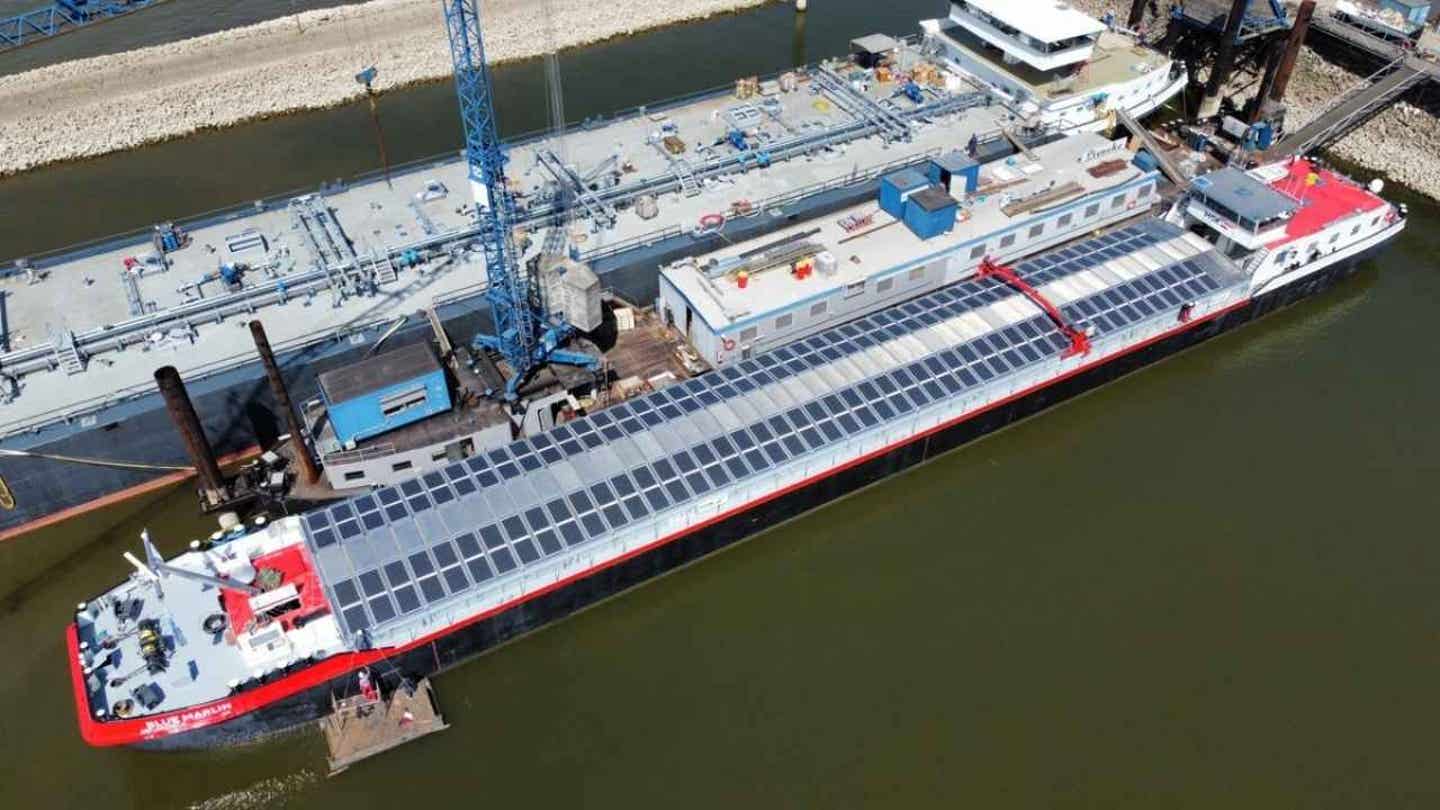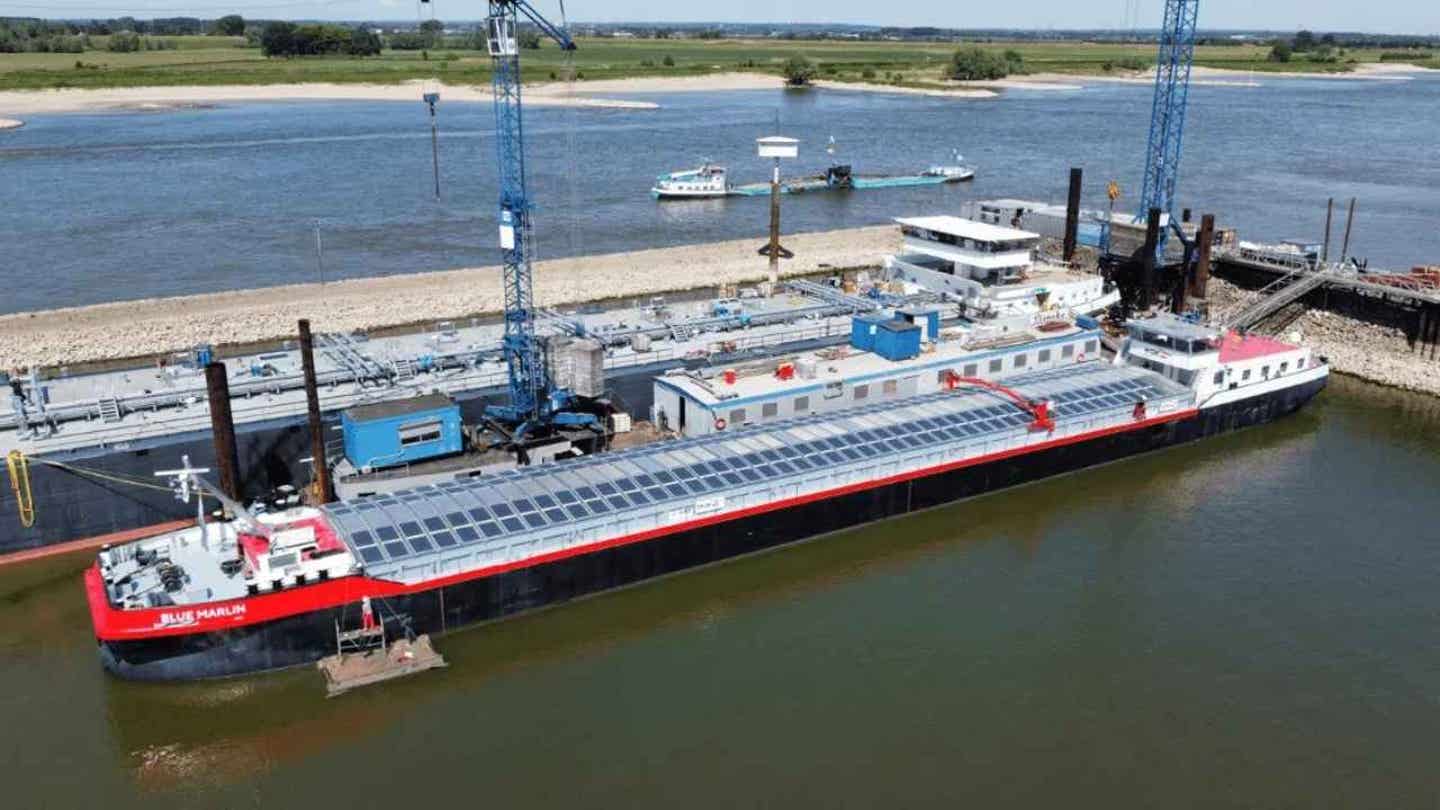NEWYou now have the option to listen to articles from Fox News!
Germany has just launched the world’s first hybrid solar cargo ship, a significant step forward for sustainable shipping. Known as the Blue Marlin, this vessel utilizes advanced solar technology not just for powering its onboard systems but also for propelling itself, setting a new standard for eco-friendly cargo transportation. By combining solar panels with a diesel-electric system, the Blue Marlin is leading the way towards cleaner and more efficient goods movement along Germany’s waterways.
The Blue Marlin is the world’s first hybrid solar cargo ship. (Wattlab)
How solar power drives the Blue Marlin
The Blue Marlin is equipped with 192 solar panels that can generate up to 35 kilowatts in optimal conditions. This amount of power is sufficient to charge over 1,400 smartphones simultaneously. The solar system, designed by Wattlab, supplies electricity directly to the ship’s propulsion system. Unlike previous vessels, the Blue Marlin utilizes solar energy for its movement, not just for basic onboard functions. In favorable conditions, the ship can operate solely on solar power for short journeys, such as downstream travel with a light load.
Reliable shipping with hybrid technology
The Blue Marlin also features four diesel generators, allowing the vessel to switch between solar and diesel-electric power as required. This hybrid setup ensures the ship remains dependable in all weather conditions. An automated energy management system oversees the distribution of power, directing energy precisely where it is needed while minimizing unnecessary fuel consumption, thereby benefiting the environment. Additionally, the ship employs peak shaving, which involves drawing on solar and battery reserves during periods of high energy demand instead of starting additional generators. This strategy reduces emissions and maintains smooth operation.

The Blue Marlin is the world’s first hybrid solar cargo ship. (Wattlab)
The Blue Martin’s suitability for Germany’s waterways
Measuring approximately 282 feet in length and 31 feet in width with a shallow draft of just 3 feet 7 inches, the Blue Marlin is well-suited for Germany’s canal network. Its hull was constructed in Romania and then outfitted with systems in the Netherlands. Currently operating out of Cologne, Germany, the vessel is equipped with SEAFAR remote navigation technology, enabling remote-controlled operation on specific routes to enhance safety and reduce the crew’s workload.
The environmental impact and design advantages of the Blue Marlin
Annually, the Blue Marlin’s solar array can generate up to 37,500 kilowatt-hours of electricity, preventing approximately 79,000 pounds of CO₂ emissions each year. Due to its modular design, the ship can connect with push barges and efficiently transport up to 3,430 short tons of bulk goods. Its hybrid diesel-electric system is also designed to transition to cleaner fuels in the future, ensuring adaptability as greener energy options become more accessible.

The Blue Marlin is the world’s first hybrid solar cargo ship. (Wattlab)
Kurt’s key takeaway
The Blue Marlin serves as more than just a technological demonstration. By effectively integrating solar power with intelligent hybrid systems, it demonstrates that performance and environmental responsibility can coexist. This vessel represents a practical example of cleaner shipping solutions, offering insights and inspiration for the future of cargo transport worldwide.
Do you have any thoughts on policies or incentives that could encourage more companies to invest in sustainable shipping solutions? Share your opinions by contacting us at Cyberguy.com/Contact
Kurt “CyberGuy” Knutsson, an award-winning tech journalist with a passion for technology and gadgets that enhance life, contributes to Fox News & FOX Business in the mornings on “FOX & Friends.” If you have a tech question, sign up for Kurt’s free CyberGuy Newsletter, share your voice, a story idea, or comment at CyberGuy.com.





